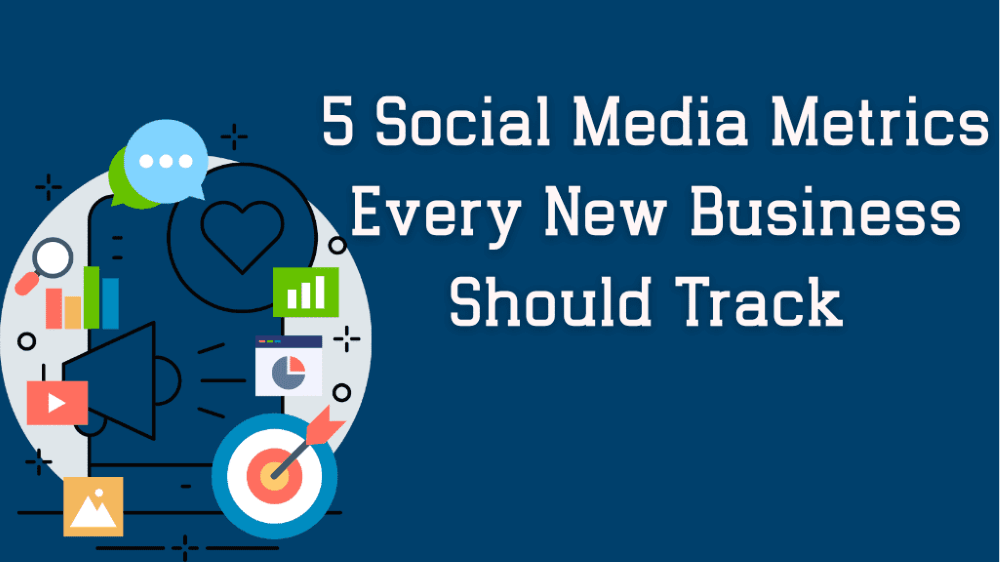Starting a new business is a whirlwind. You’re the CEO, the marketer, the customer service rep, and maybe even the janitor. With so much to do, tracking your social media performance can feel overwhelming. It’s tempting to focus on the most visible number: your follower count. But a large audience that doesn’t care about your brand is like a storefront on a busy street that no one enters. It looks impressive, but it doesn’t pay the bills.
The key is to focus on metrics that reveal the health of your relationship with your audience and its impact on your business goals. Forget the vanity metrics for a moment. Let’s dive into the numbers that actually matter.
1. Engagement Rate
Before you worry about how many people follow you, you need to know if the ones who do follow you are actually listening. That’s where engagement rate comes in. This metric measures the percentage of your audience that interacts with your content through likes, comments, shares, and saves. A high engagement rate on a small account is far more valuable than a low one on a massive account.
Why does it matter for a new business? It’s your earliest indicator of product-market fit on social media. It tells you what content resonates with your target customer. A post with high engagement is a clue. Double down on that topic or format. A post with low engagement is a sign to pivot. You can calculate this by dividing your total engagements on a post by your total followers (or by the post’s reach for a more accurate view) and multiplying by 100. If you want to track these numbers more efficiently and manage performance across multiple platforms, using SMM panels can save time, a detailed tips and reports.
2. Reach vs. Impressions
These two terms are often used interchangeably, but they tell different stories. Impressions are the total number of times your content was displayed on a screen. Reach is the number of unique people who saw your content. Think of it this way: if one person sees your post three times, that’s three impressions, but only one person was reached.
For a new business, tracking both is crucial. A high number of impressions with low reach might mean your existing followers are seeing your content repeatedly, but you aren’t breaking into new audiences. Your goal in the early days is to expand your reach, getting your brand in front of fresh eyes. If your reach is stagnant, it’s a sign you need to experiment with hashtags, different content types, or collaborations to broaden your visibility.
3. Click-Through Rate (CTR)
Social media is rarely the final destination; it’s the signpost that points people to your website, your product page, or your newsletter signup. The Click-Through Rate (CTR) measures how effective you are at getting people to take that next step. It’s the percentage of people who saw your post and clicked the link within it.
A low CTR, even with high engagement, can signal a disconnect. Maybe your call-to-action is unclear, or the link you’re sharing doesn’t seem valuable enough. For a new business, every click is a potential lead. Monitor your CTR on posts that include links. Experiment with your captions and visuals to see what drives more people to your website, where the real business happens. Understanding what drives traffic is a fundamental part of leveraging web analytics for growth.
4. Conversion Rate
This is where the rubber meets the road. A conversion is the specific, valuable action you want a user to take after clicking your link. For an e-commerce store, it’s a sale. For a service business, it might be a contact form submission or a booked consultation. Your social media conversion rate is the percentage of visitors from a social channel who complete that desired action.
While harder to track without tools like Meta Pixel or Google Analytics, it’s the most important metric for proving ROI. Are your social media efforts actually generating revenue or leads? If your conversion rate is low, you may have an issue with your landing page, your offer, or the audience you’re attracting. It connects your social media activity directly to your bottom line.
5. Audience Growth Rate
Wait, didn’t we say to ignore follower count? Not entirely. The raw number isn’t as important as the rate at which it’s growing. A stagnant follower count means your brand isn’t reaching new people. The Audience Growth Rate shows the speed at which you are attracting new followers over a specific period.
To calculate it, take your new followers over a period (e.g., a month), divide it by the number of followers you had at the start of that period, and multiply by 100. This percentage tells a much richer story than the raw number. A steady growth rate shows your content strategy is working and your brand is gaining momentum. For many new ventures, initial visibility can be a major hurdle; research suggests that a strong digital presence is vital, as most of the consumers consider social proof before engaging with a new brand, making it essential to focus on gaining early traction to build a solid foundation.
Frequently Asked Questions
How often should I track these social media metrics?
For a new business, checking in weekly is a good starting point. This allows you to be agile and make quick adjustments to your strategy without getting bogged down in daily fluctuations. As you grow, you might shift to bi-weekly or monthly reporting.
Which social media platform is best for a new business?
The best platform is the one where your target audience spends their time. Don’t try to be everywhere at once. Research your ideal customer.
Do I need expensive tools to track these metrics?
Not at all. Every major social media platform has a built-in analytics dashboard (like Meta Business Suite or Twitter Analytics) that provides data on engagement, reach, and clicks for free. These are more than enough to get you started.
What’s a “good” engagement rate to aim for?
This varies wildly by industry and platform. Generally, an engagement rate between 1% and 5% is considered good. However, instead of comparing yourself to broad benchmarks, focus on improving your own average rate month-over-month.
My metrics are low. What’s the first thing I should change?
Before changing anything, make sure you truly understand your audience. Low metrics are often a symptom of a content-audience mismatch.






